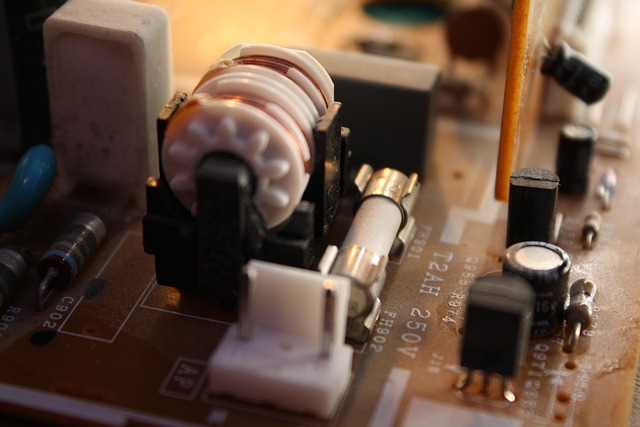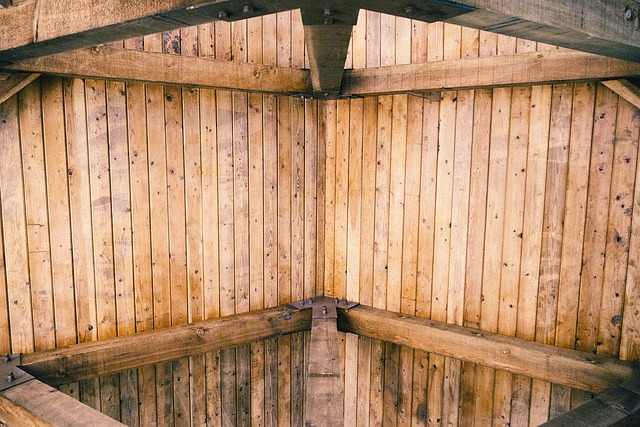Glue Laminated Beams (GLBs) offer significant advantages over solid wood beams in construction. With engineered layers bonded with strong adhesives, GLBs provide superior strength, durability, and fire resistance while maintaining precise dimensions. They are cost-effective, environmentally friendly, and ideal for modern load-bearing applications, balancing structural integrity with aesthetic appeal. Compare GLBs to solid wood based on project needs, budget, and design preferences.
Discover the world of glue laminates—a innovative construction material revolutionizing structural design. This article explores best practices for designing with glued laminates, offering a comprehensive guide on their unique properties and advantages over traditional solid wood beams. We delve into selection criteria ensuring optimal performance, design considerations for both structural integrity and aesthetic appeal, and key applications, highlighting the benefits of glue laminates in various contexts compared to solid wood beams.
- Understanding Glue Laminated Beams: Properties and Advantages
- Selection Criteria for Optimal Laminate Performance
- Design Considerations for Structural Integrity and Aesthetics
- Applications and Comparisons with Solid Wood Beams
Understanding Glue Laminated Beams: Properties and Advantages

Glue laminating is a modern wood-processing technique that involves bonding multiple layers of thin wood veneers together with strong adhesives to create sturdy structural elements known as glue laminated beams. This method offers distinct advantages over traditional solid wood beams, particularly in terms of strength and durability. Glue Laminated Beams vs. Solid Wood Beam: the comparison highlights key differences that impact structural integrity, cost-effectiveness, and environmental considerations.
While solid wood beams have long been the go-to choice for construction, glue laminated beams provide enhanced structural capabilities. They are capable of carrying heavier loads with superior strength-to-weight ratio. The lamination process creates a uniform, dense structure, eliminating the variability found in natural solid wood. This consistency translates to predictable performance, making glued laminates ideal for precise architectural designs. Furthermore, the production process allows for precise control over beam dimensions, ensuring compliance with exacting building codes. Exploring the benefits of glue lamination vs. natural solid wood beam construction reveals cost-effective alternatives that don’t compromise on structural integrity. For instance, laminated beams offer significant savings compared to their solid wood counterparts while maintaining superior longevity and fire resistance. Visit us at unalam.com anytime for more insights into these innovative construction solutions.
Selection Criteria for Optimal Laminate Performance

When selecting materials for structural elements like beams, understanding the differences between Glue Laminated Beams vs Solid Wood is crucial. In terms of strength and durability comparison, laminated beams offer distinct advantages. They are engineered by bonding multiple layers of wood together with high-performance adhesives, creating a composite structure that surpasses solid wood in load-bearing capacity. This makes them a superior choice for applications requiring exceptional structural integrity.
For instance, when comparing which beam type is best: solid wood or laminated for structural integrity, laminated beams excel due to their consistent strength across the entire cross-section. They are also more resistant to warping and splitting, ensuring longevity in various environmental conditions. Moreover, the benefits of glue lamination vs natural solid wood beam construction include enhanced dimensional stability and a reduced risk of moisture damage. Visiting us at 18 Clifton St, Unadilla, NY 13849 anytime can provide further insights into these advanced construction solutions for your projects.
Design Considerations for Structural Integrity and Aesthetics

When designing with glued laminates, especially for structural elements like beams, it’s crucial to balance structural integrity and aesthetics. Glue laminated beams offer a compelling alternative to solid wood, providing superior strength and durability in many cases (Glue Laminated Beam vs. Solid Wood Beam). This is particularly evident in load-bearing capacity and longevity, where laminates often outperform their natural wood counterparts.
For instance, the structural advantages of glue laminated beams stem from their composite construction, which combines multiple layers of wood for enhanced strength and stiffness. This design allows for larger spans and more complex structural configurations. Moreover, the sustainability of these beams is a significant consideration; the production process for glue laminates can be more environmentally friendly than traditional solid wood processing (21, 22). If you’re considering your options, give us a call at (607) 369-9341 to explore how glued laminates can meet both your structural needs and design aspirations.
Applications and Comparisons with Solid Wood Beams

In the realm of structural design, the choice between Glue Laminated Beams and Solid Wood Beams is a crucial consideration. When comparing Glue Laminated Beam vs. Solid Wood, several factors come into play, impacting both strength and durability. Laminated beams, crafted from multiple layers of wood glued together, offer exceptional strength-to-weight ratio and superior dimensional stability. This makes them ideal for load-bearing applications, especially in modern architectural designs where aesthetics meet functionality.
On the other hand, solid wood beams boast natural beauty and traditional charm. They are favored for their warmth and ability to enhance indoor spaces. However, solid wood is prone to warping, splitting, and shrinking over time, which can compromise structural integrity. In terms of cost, laminated beams often provide a more economical alternative without compromising on strength. For eco-conscious builders, exploring sustainable production methods of both materials is essential. Ultimately, the choice between these two depends on specific project requirements, budget, and aesthetic preferences. To find out more about structural wood solutions, visit us at unalam.com.
When designing with glued laminates, understanding their unique properties and advantages is key. By selecting the right materials and considering structural integrity, aesthetics, and specific applications, designers can create efficient and sustainable structures. Compared to solid wood beams, glue laminates offer enhanced strength-to-weight ratios and dimensional stability, making them a compelling choice for modern construction. Adhering to best practices ensures that glued laminates deliver both structural performance and visual appeal in various architectural contexts.














